盛装舞步,又称花样骑术和马场马术,是马术运动的基础,也是能够完成场地障碍和越野赛的基本要素,1912年被纳入奥运会的正式比赛。举办盛装舞步赛事,对于提升骑手的骑术水平、培养马匹的服从性和灵活性,以及促进人马之间的和谐关系具有重要意义。
为提升北京地区盛装舞步水平和影响力,培养马术人才,促进国际交流,提升公众对马术运动的认知、理解和兴趣,传承和弘扬马术文化。北京市马术运动协会于2024年开展了“北京舞者”马术盛装舞步俱乐部联赛,BHS院士级教官Jeremy受邀担任第一站、第二站与第八站比赛中马协初一级和初二级裁判,并分享了他在执裁比赛中的观察和建议。
The below comments and suggestions are BY NO MEANS meant to be criticisms - far from it! They are meant to support, suggest and hopefully help to improve the competitions and the training of riders.
提出以下的意见和建议绝对不是批评!恰恰相反,本文是为了提供支持和建议,希望对骑手提高比赛成绩和训练水平有帮助。

In my role as a dressage judge, my first aim is to reward good training and riding and then to support/help the riders and coaches by identifying any weaknesses in the horses’ and riders’ way of going. Below are a few areas I have highlighted where I hope I can be helpful to judges, riders and coaches alike.
作为舞步裁判,我的首要目的是奖励优秀的训练和骑乘,通过观察人马行进状态,并点评哪些地方可以提升来帮助骑手和教练。我想就以下几个方面分享个人的经验,希望能对裁判、骑手和教练有所帮助。
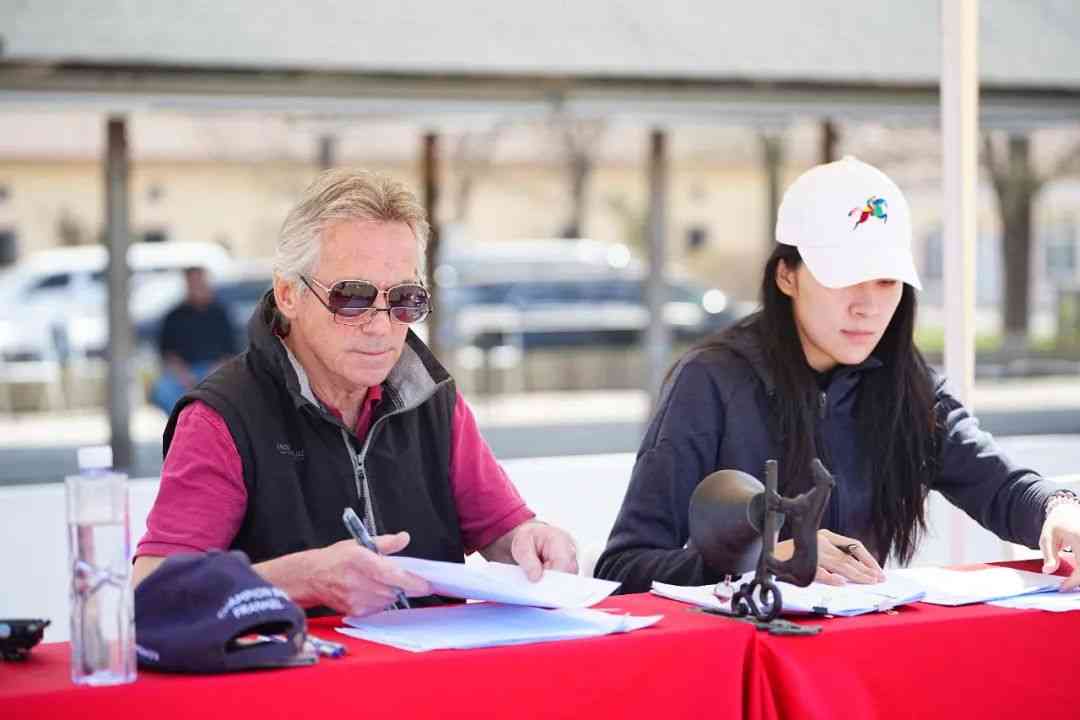
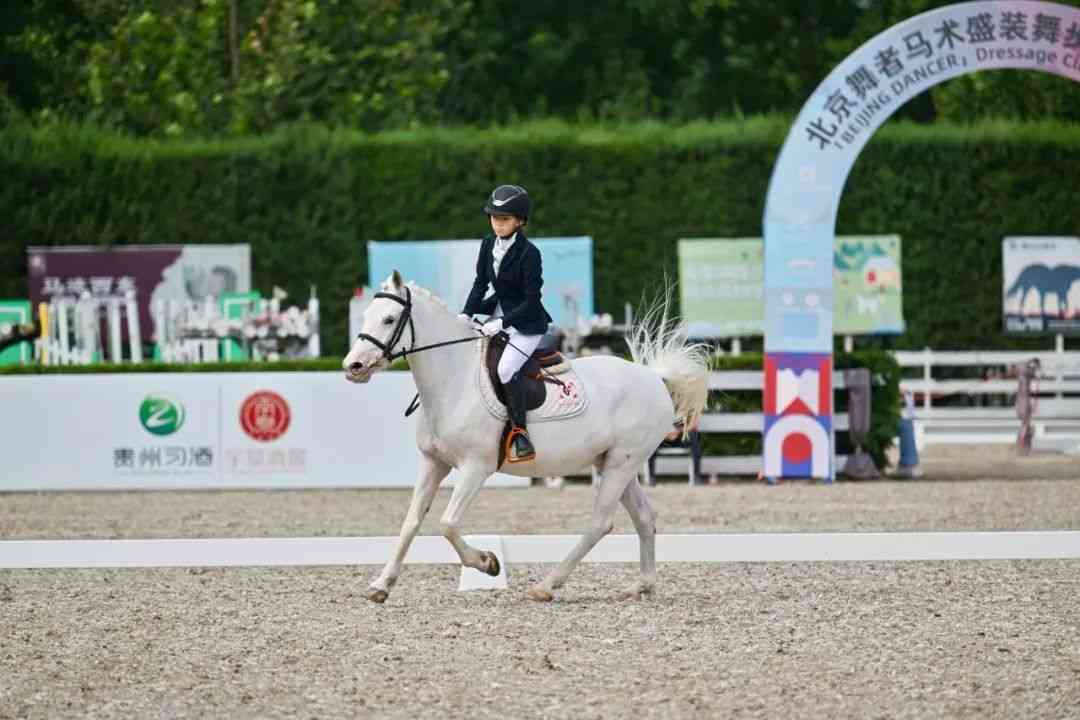
压浪快步VS轻快步
Sitting trot versus rising trot
In the competition yesterday (Beijing Dancer, 6 April 2024) I judged the CEA Preparatory I and CEA Preparatory II tests.
在“北京舞者”马术盛装舞步俱乐部联赛(第一站)中,我担任了中马协盛装舞步初一级和初二级组别的裁判。
In CEA I, the directive was that ‘Only sitting trot is allowed’. In CEA II, all trot work had to be done sitting. I watched the tests and my fellow and fellow judge and I met afterwards and discussed the tests and the riders. We were both agreed that because the riders (young and mature) sat to the trot the horses and ponies could NOT FREELY MOVE FORWARD. We so wanted to ask the riders to start rising trot so that the backs of the horses/ponies were freer and they could swing and move forward.
在中马协初一级组别中,只允许压浪快步。在中马协初二级中,所有快步都必须是压浪快步。我观看了比赛,并在赛后与其他裁判一起对比赛和骑手做了讨论。我们都认为,由于有些骑手(年轻或有经验)做压浪快步时,马匹无法自由向前。我们非常希望让这些骑手从轻快步开始,这样马匹背部能更放松,可以摆动起来更向前行进。
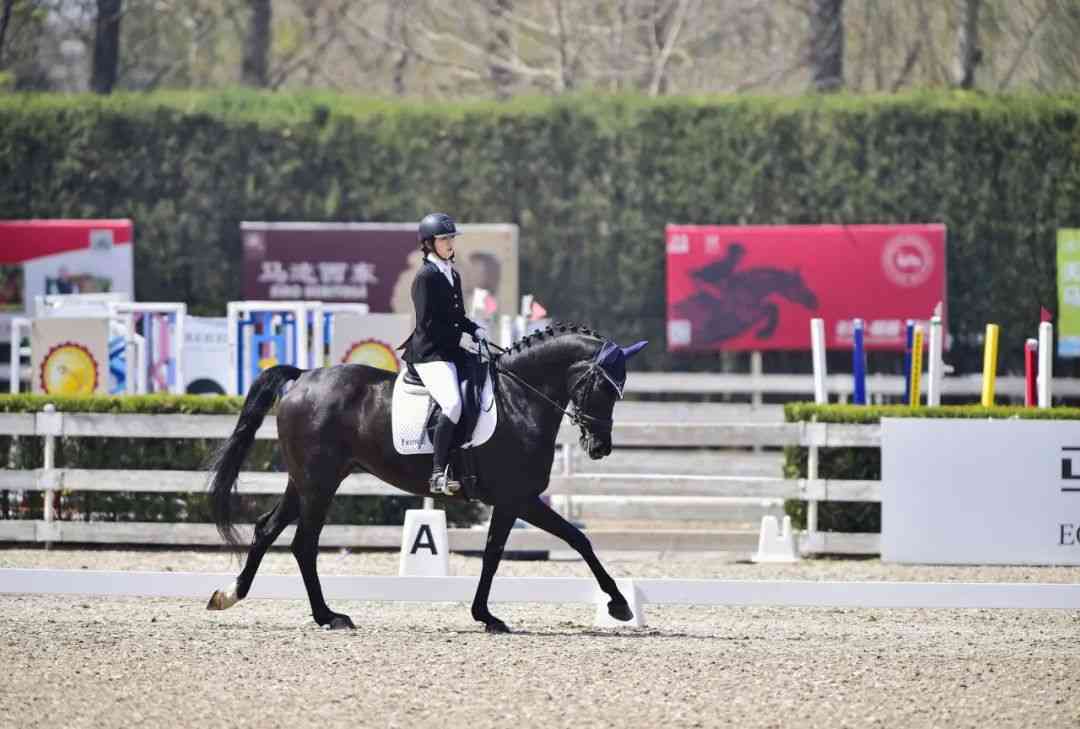
Yesterday, of course there were some riders who were sitting well to the trot and were not hindering the movement of the horses/ponies but some were not - my comments are not aimed at that them!
当然,本站比赛期间有一些骑手压浪快步做的很好,没有妨碍马匹的动作,但也有一些骑手做的并不好-上面的建议不适用于压浪快步做的好的骑手!
Some of the horses/ponies yesterday were older, stiffer, bigger-striding - it does not really matter, what does matter is that the competitors must be able to choose whether they sit or rise in these earlier tests; I agree that further up the competitive ladder, the riders must sit to the trot.
这次参赛的马匹,有一些马匹年龄较大、更僵硬、步幅更大-这些并不重要,重要的是在这些初级级别的舞步比赛中,骑手必须要在开始时就可以选择是否压浪还是轻快步;我同意在更高阶比赛时,骑手必须做压浪快步。
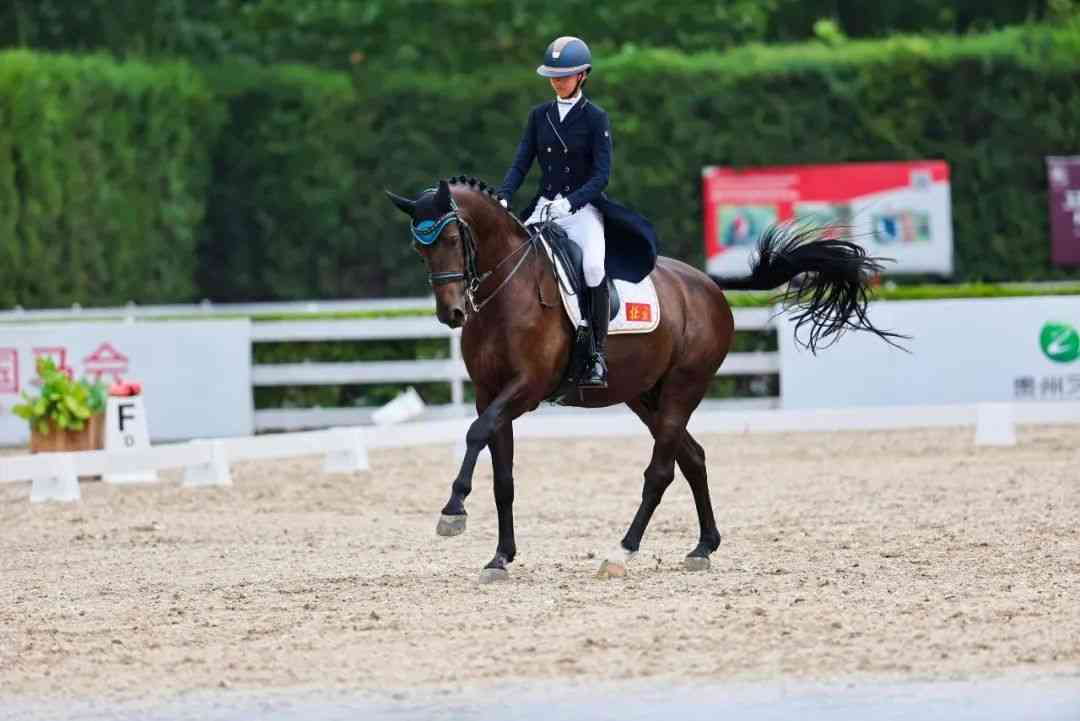
What was worrying watching and judging the tests yesterday, is the way the riders actually sat on the horses/ponies. They were stiff, tight through the hips and back, hands moving because they sat to the trot. Due to the way the riders sat to the trot, the horses and ponies simply could not use their bodies well enough to move freely forward. If those riders could have chosen rising trot, the effect on the horses/ponies would have been dramatic - they would have started to move through their bodies. This point is closely connected to Coaching/Training - see below.
在我观看比赛以及执裁期间,有的骑手的压浪快步方式让我担心。压浪快步时,这些骑手身体僵硬,臀部和背部紧绷,手部晃动,而且马匹无法很好地让自己的身体自由向前。如果当时骑手选择做轻快步,马匹的运动状态将会发生巨大改善——马匹身体开始向前。这一点与教学/训练紧密相关——请见下文。
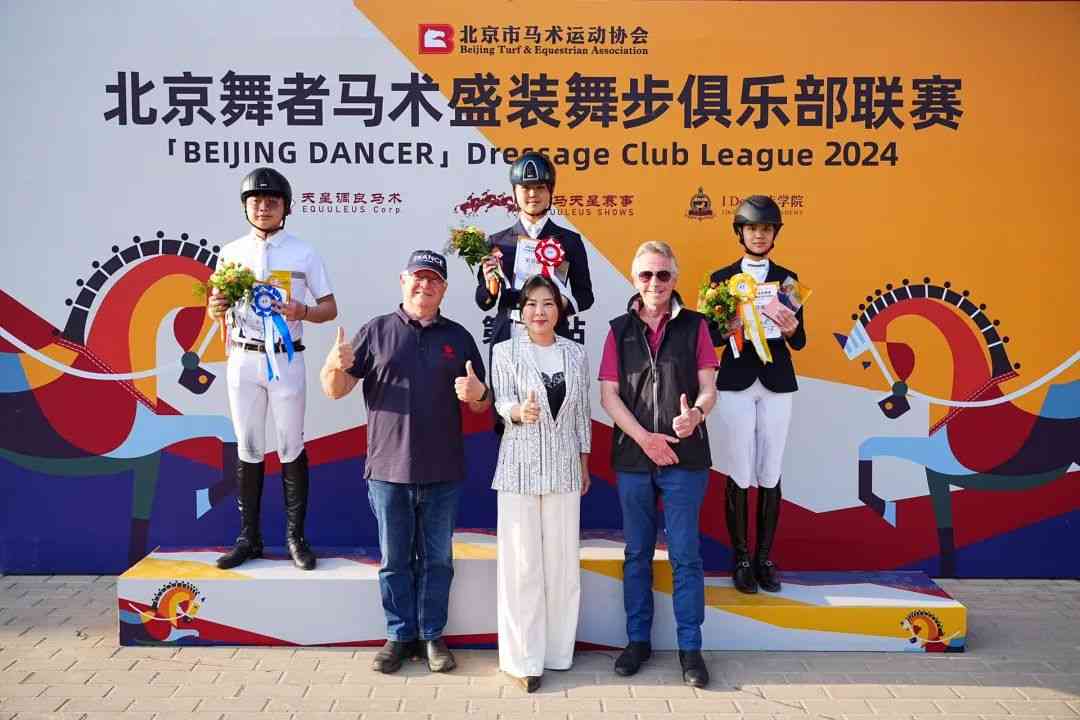
教学/训练
Coaching/Training
I am sure that most, if not all of the competitors yesterday have a coach who trains them. We all need ‘eyes on the ground’ as riders, to help us improve and to help us feel where our strengths and weaknesses lie.
我相信比赛期间的大部分骑手,都有在教练的指导下进行训练。作为骑手,我们都需要“马下的眼睛”帮助我们提高,帮助我们了解优点和需要提升的地方。
If the lower level dressage tests allow rising trot, the coaches will be able to explain to the riders when and where they should rise or sit depending on the test, the movement, the transition etc. This is important because riders and coaches need to work together to develop the horses/ponies and their way of going.
如果初级组别的舞步比赛允许轻快步,骑手就能得到教练的指导,并知道可以根据比赛内容、动作以及移行变换等要求,来决定自己何时何地应该做压浪快步或轻快步。这点很重要,因为骑手和教练需要共同努力来提高马匹能力以及行进状态。
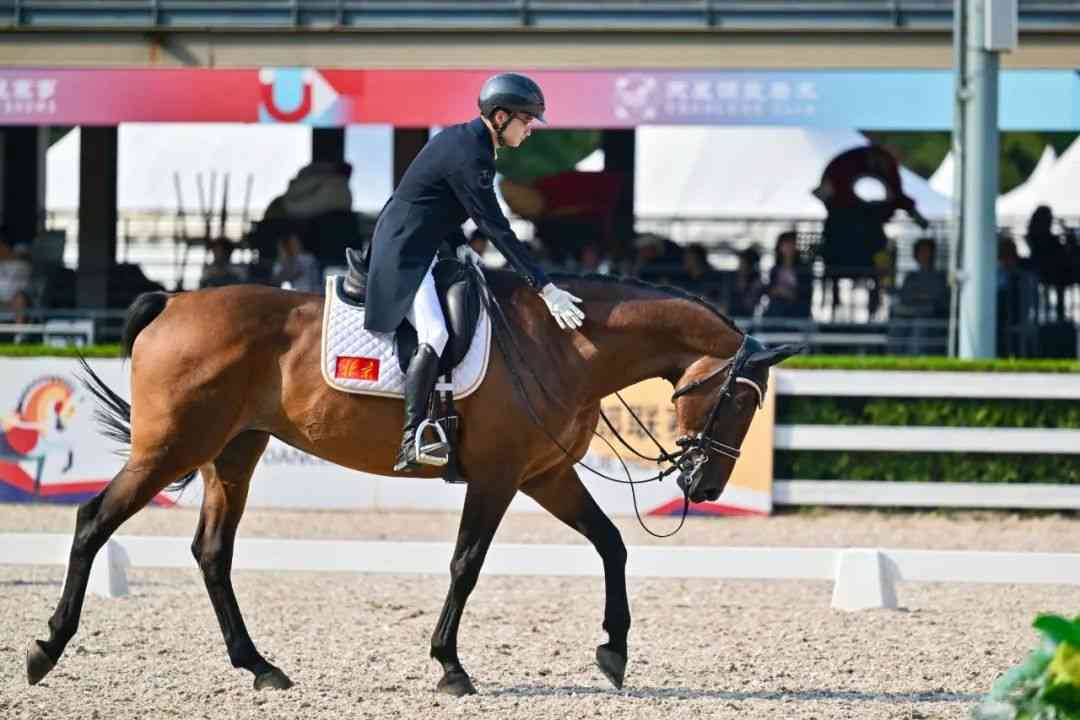
For example, in CEA Preparatory Test II, movement 3 - the rider has to show working trot from F - H (long diagonal); if the riders are taught to rise to the trot across the diagonal, the feeling and freedom in the horse/pony will be much improved, as will the marks.
例如,在中马协初二级,第三个动作,骑手需要展示从F-H(长对角线)的工作快步;如果教练有指导过骑手在对角线上轻快步,马匹的感觉和自由度将会大大提升,比赛的得分也会有所提高。
So, if there is a choice for the rider, either rising or sitting trot, they and their coaches can decide which is best for that horse/pony in that movement.
所以,如果骑手可以选择轻快步或压浪快步,由骑手和教练决定哪个最适合马匹。
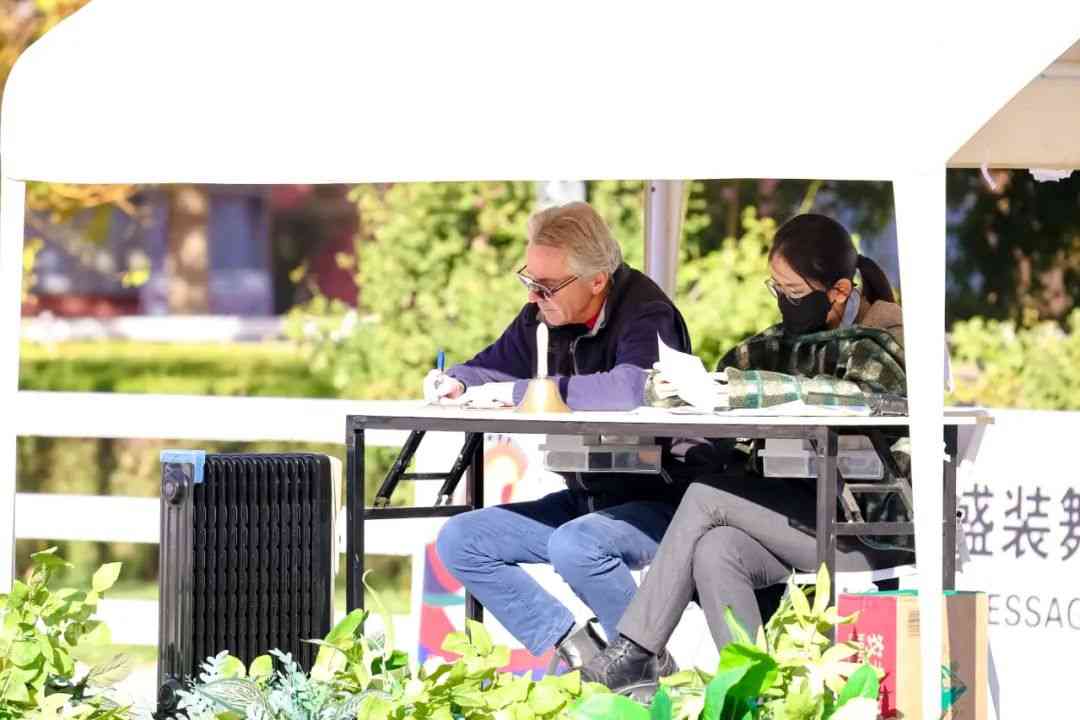
Another coaching point - stirrup length. I saw at least six young riders yesterday with their stirrups MUCH TOO LONG. As the stirrups were too long, the riders were trying hard to keep their feet in the stirrups, toes were down, legs were loose, seats were loose and bouncing.
另一个学习要点——镫带长度。在比赛中我看到至少六位年轻骑手的镫带太长了。由于镫带过长,骑手努力让脚保持在脚镫内,脚尖朝下,腿部松懈,坐姿也松懈且晃动。
It is very important that riders/coaches understand the importance of a secure, balanced seat and leg, and strive to establish this security. There are some caches who think dressage is all about long stirrups; they immediately tell their riders to lengthen the stirrups when the they start to ride BUT until the rider has some balance and security they CANNOT ride with longer stirrups.
骑手/教练能够理解稳固、平衡的坐姿和腿部的重要性,并努力建立稳定性,这是非常重要的。有些教练认为盛装舞步就意味着长镫带;在骑手刚开始骑马时,有的教练就告诉骑手放长镫带,而在骑手还未建立平衡和稳定的骑姿前,骑手是无法骑乘较长的镫带的。
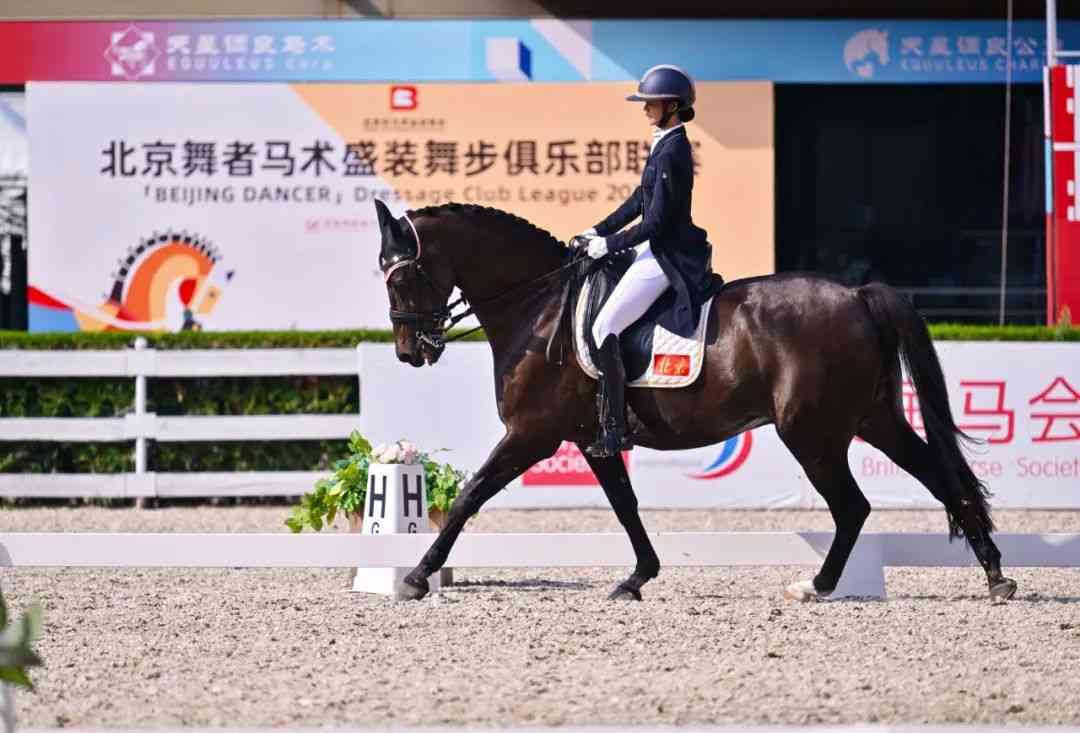
Coaches must explain to their riders that they need shorter stirrups when learning to ride, they need some work without stirrups, and they need some lunge work. All of this will improve their seats and positions.
教练必须向骑手解释,学习骑乘时需要收短镫带,需要进行一些脱镫训练,还要进行打圈训练。所有这些训练都会改善坐姿和骑姿。
Yesterday, if some of those riders’ stirrups were 2 or 3 holes shorter, they would have more secure and balanced positions, stiller legs, toes up, feet secure in the stirrups and would therefore been able to give more clear aids to their horses/ponies.
本站比赛期间,如果一些骑手的镫带收短2-3个扣眼,他们的骑姿就会更稳固、更平衡,腿部更稳,脚尖朝上,脚稳定地放在脚镫上,这样能更给马匹更清晰的扶助。
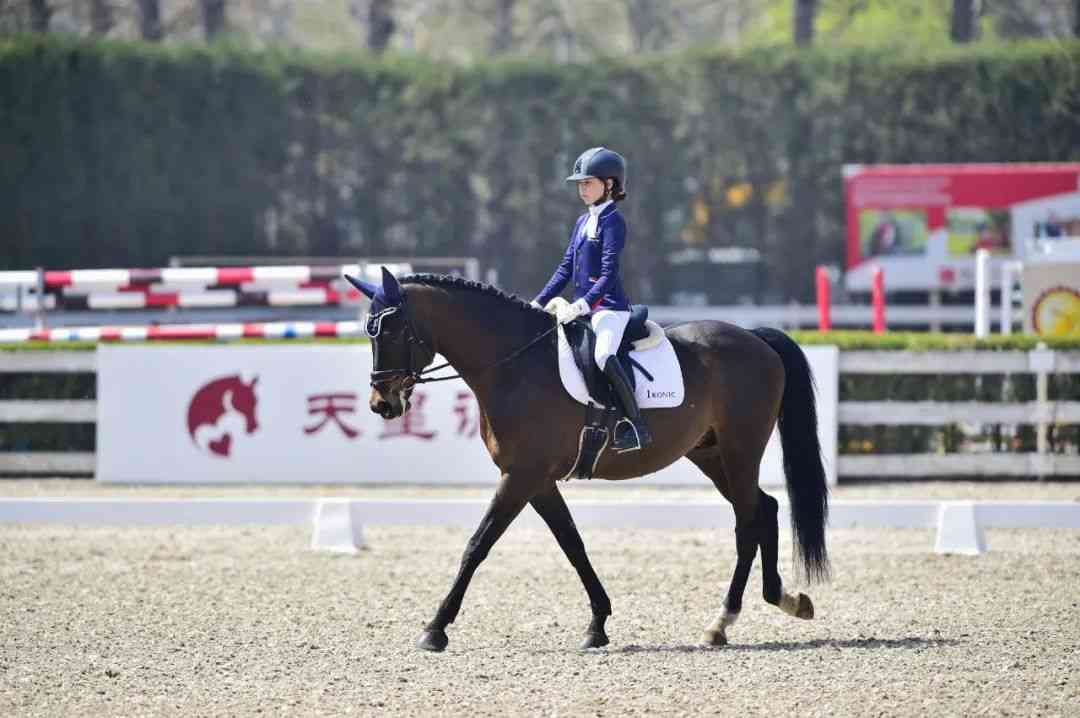
隅角
Corners
As a judge and rider, I understand the importance of being able to ride good corners in the arena. A good corner can help to re-balance your horse, can prepare you for the next movement eg a diagonal, can prepare you for shoulder-in or half pass etc.
作为裁判和骑手,我理解在场地中能够骑好隅角的重要性。骑乘好隅角可以帮助马匹重新平衡,可以为下一个动作做准备,比如对角线,可以让你准备好做肩内或斜横步等。
When training, coaches and riders must practice working on and riding good corners BUT yesterday, I saw many riders at all levels who went far too deeply into the corners, which had the effect of almost stopping their horse, breaking the rhythm and fluency - it was detrimental to the horse/pony.
在训练时,教练和骑手必须练习并骑好隅角。但是在比赛时,我看到几乎不同级别的很多骑手过度深入隅角,导致马匹几乎快停下,打破了节奏和流畅性--这对马匹是有害的。
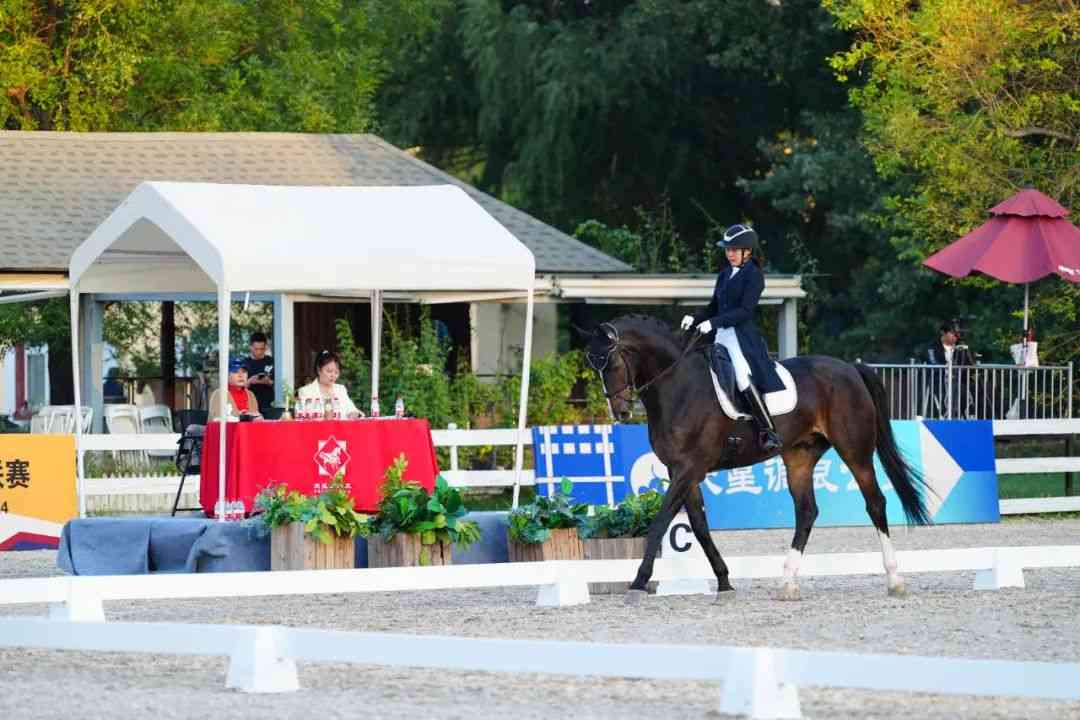
If coaches read the FEI dressage definition of corners, they will see at lower levels it is defined as a quarter of a 10m circle; at higher levels due to better collection, etc the corners can be slightly deeper.
如果教练查看国际马联对舞步中关于隅角的定义,就知道在较低级别比赛中,隅角的定义是:10米圈乘的四分之一;而在更高级别比赛中,由于更好的收缩等原因,隅角可以稍微走深入一些。
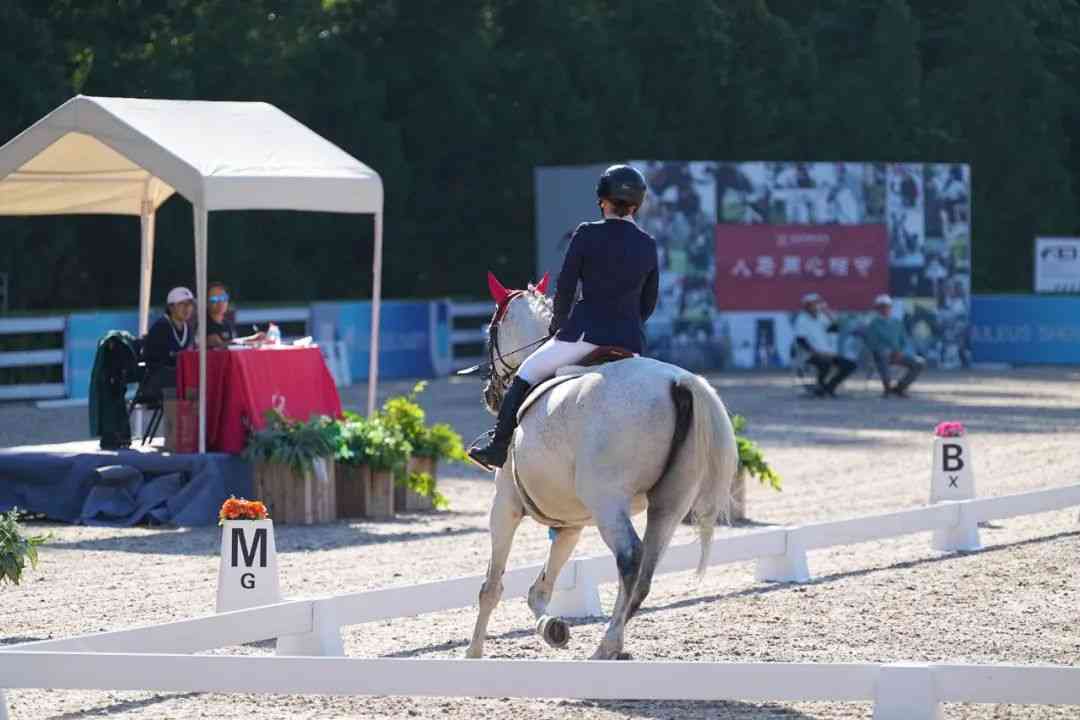
Many of the riders yesterday went far too deeply into their corners particularly at walk and trot. It is important that the rhythm of the pace/gait is not affected or interrupted. When coaches are teaching I totally agree that their riders must learn to ride good corners and turns but not to the detriment of the rhythm and paces/gaits.
由于很多骑手过度深入隅角,尤其是在慢步和快步时。重要的是不能影响或打断马匹的步法节奏。我完全同意的是,教练必须教骑手学会骑好隅角和转弯,但不能以打断节奏和步法为代价。
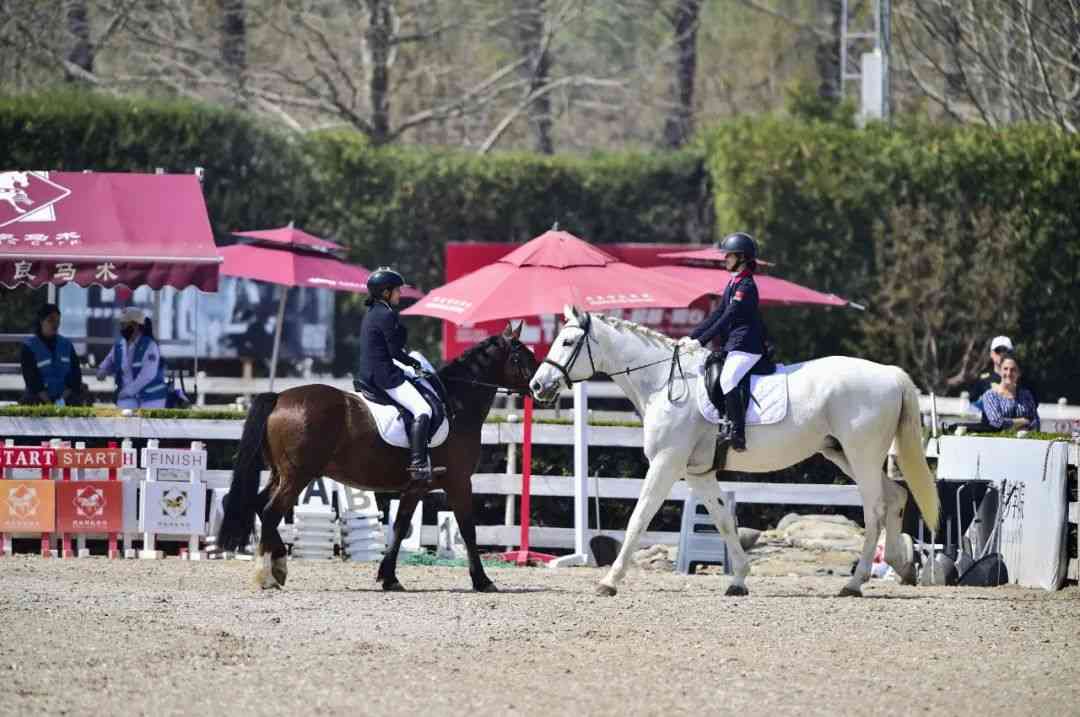
准确性-整体来看
Accuracy - General
At the dressage yesterday, many competitors wasted marks by riding inaccurate movements and abrupt, crude transitions.
在第一站舞步比赛中,许多骑手由于不准确的动作以及突然、不到位的移行变换而丢分。
Movements - riding accurate serpentines, centre lines, diagonals, circles will help you pick up more marks. Riders throw away marks by circles that are too small or large, uneven in shape and size; serpentines that are the wrong shape; not riding from one letter to another accurately, e.g, diagonals; riding to the left or right of the centre line rather on it. These are marks that all competitors can improve upon just by looking ahead and planning where they are going.
动作 - 准确骑乘蛇形、中央线、对角线、圈乘会帮助骑手得到更高分。骑手会因为圈乘太小或太大、形状、大小不均而丢分;蛇形中的图形错误;没有准确地从一个字母到另一个字母,例如对角线;在中央线的左边或右边而没有在中央线上骑乘。所有骑手都可以通过提前看前方并计划行进路线来提高分数。
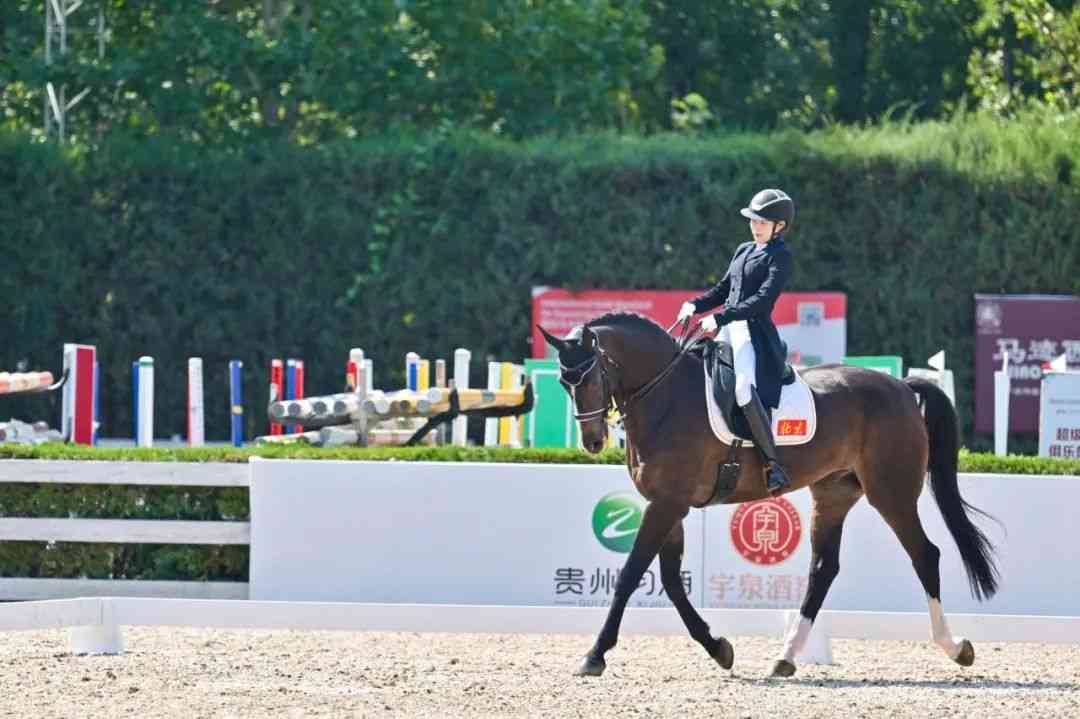
Coaches too have a responsibility here by teaching their riders HOW to ride correctly shaped serpentines and circles.
教练也有责任教导骑手如何正确地骑乘蛇形和圈乘。
Halts and Salutes - very few riders yesterday established the halt at the beginning and end of their test. They seemed in a big rush and many of the riders lost marks because the halt was not still or immobile.
立定并敬礼-比赛时很少有骑手在比赛开始和结束时立定。他们似乎很匆忙,很多骑手因没停下或没停稳或马匹移动而丢分。
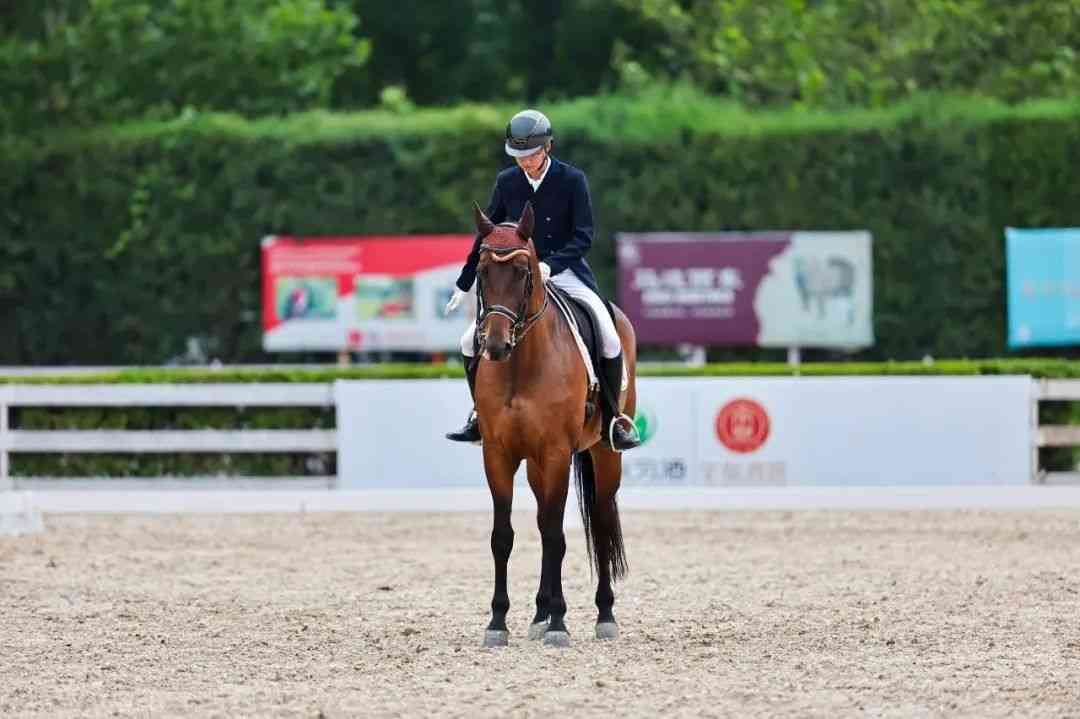
When a rider enters the arena down the centre line and halts at X, they should stop, ensure the horse is standing still, then salute (again, without rushing), then retake the reins and then move off.
当骑手从中央线进入场地并在X点立定时,他们应该停下来,确保安静站立,然后敬礼(强调一下:敬礼时不要匆匆忙忙),再重新拿起缰绳,继续行进。
Similarly, at the end of the test whether the halt is at X or I or G, the rider MUST establish the halt before saluting.同样,在比赛结束时,无论停在X、I还是G点,骑手必须在敬礼前确保马匹立定。

Give andRetake the reins/allowing the horse to stretch - these are exercises that were asked for yesterday in some tests. Very few riders rode these well; the reason for being asked to show ‘Give and Retake the reins’ is to demonstrate to the judge that their horse is in not relying on the reins for support, it is in ‘self carriage’ - if a horse changes it’s outline, or head comes up or it changes gait etc, it shows the judge that the rider was using the reins too much and was supporting the horse. Asking the horse to stretch on a longer rein at trot, is in the test to show the judge that the horse is using his/her back correctly when working and if allowed, it will look downwards and forwards for the contact without losing balance or rhythm; then when the reins are retaken, there is no resistance fro the horse, he accepts the bit without argument.
“给”缰和重新“收回”缰/让马伸展-这些是第一站舞步比赛中要求的练习。很少有骑手能做好这些 ;要求“给”缰和重新“收回”缰,是向裁判展示马匹不依赖缰绳,马处于“自我承载”的状态-如果马匹改变了轮廓,或抬起头或改变步法等,这表明骑手过多地使用了缰绳且在支撑马匹。快步时要求马匹长缰伸展,是为了向裁判展示,马匹在工作时正确使用了背部,如果允许的话,马匹会在不失去平衡和节奏的情况下,向下向前伸展进入到联系中;然后当“收回”缰时,马匹不抗拒,接受衔铁。
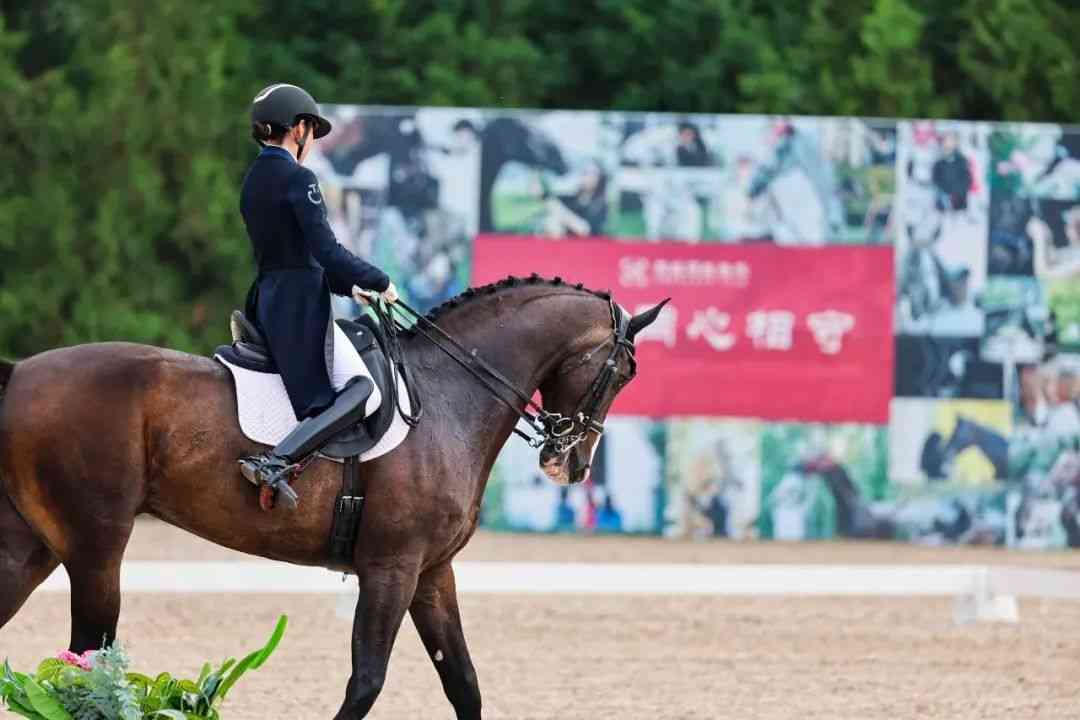
These are exercises all riders can and should practice at home in training.
所有骑手都可以/应该在家练习的下面的训练。
Transitions - particularly downward ones - a number of riders simply did not prepare their horses for the downward transitions. This was seen not only at the lower levels but even at Prix St Georges level. The horses were literally pulled, using reins and force into walk or halt. Naturally riders lost marks not only for the movement but also in the Collective marks at the end of the test.
移行变换--特别是向下的移行变换-许多骑手没有为马做好向下移行变换的准备。不仅是低级别,甚至是圣乔治级别,都有出现这个问题。骑手用缰绳或用力把马拉到慢步或立定。骑手必然不仅在动作上丢分,而且在综合评分中也会丢分。
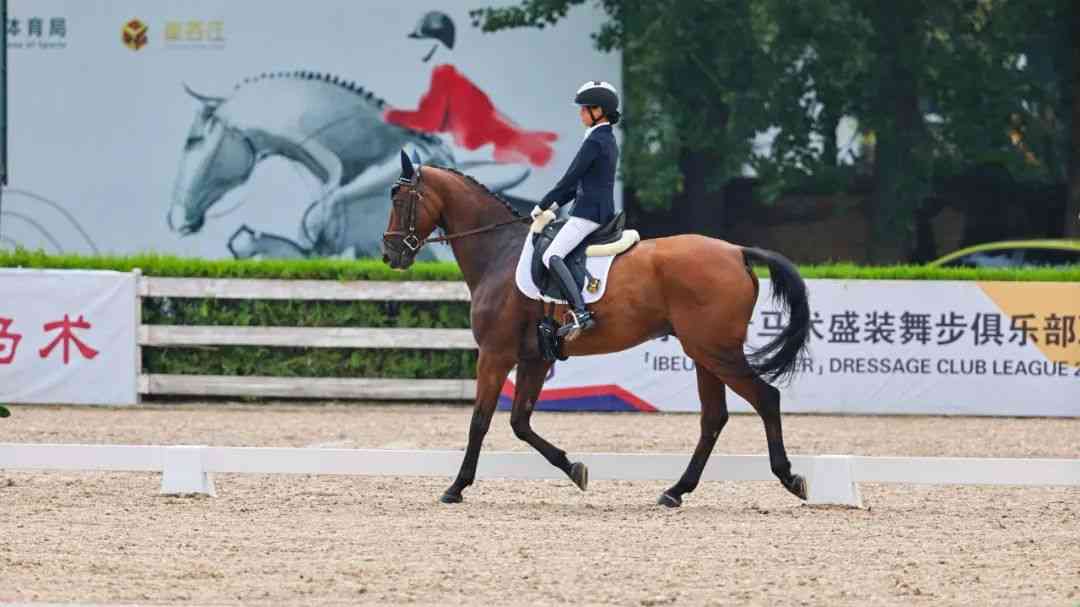
For ANY transition, horses must be PREPARED by the rider and REBALANCED in readiness for that transition. Using HALF-HALTS to rebalance the horse, ensure he is ready, listening, using his hind legs to carry more weight (as opposed to being on the forehand and pulling/leaning on the rider’s hands).
对于移行变换,马匹必须做好准备,并重新平衡以准备做移行变换。使用半减却来让马匹重新平衡,确保马匹准备好了、在倾听,并用后肢承担更多的重量(而不是前腿负重,拉拽、依靠骑手的手)。
When entering the test on the centre line where they had to halt at X, they simply got to X, leant back and pulled and were surprised when the horse did not/could not stop at X. This was also true when preparing to leave the test at the end.
比赛开始时,骑手进入中央线,需要停在X点,有些骑手只是到达了X点,身体向后仰并拉缰绳,当马匹没有/无法在X点停止时,骑手很惊讶。在比赛结束后准备离开时也一样。
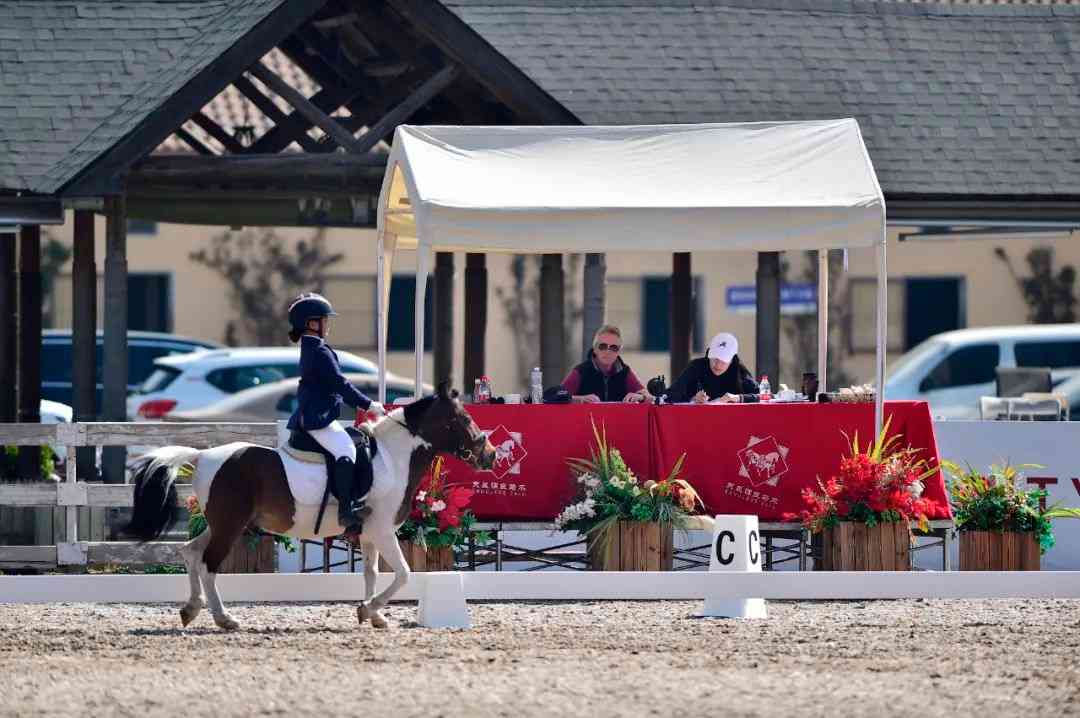
In some tests a simple change of leg, or canter to walk/trot transition was asked fort; some riders rode this quite well for which they were rewarded BUT many did not for which they lost marks.
在某几个组别的比赛中,要求进行简单的换腿或者从跑步到慢步/快步的变换;一些骑手表现得相当出色,获得了高分,但是很多骑手没有做到,因此而丢分。
PREPARATION and thinking ahead and planning are very important aspects of riding. Horses are not machines and cannot stop by flicking a switch, they need to be prepared in advance of a movement, then the transitions will become smoother and there will be HARMONY between horses and riders (and riders should gain higher marks!!).
做好准备、提前思考和制定计划是骑乘非常重要的方面。马匹不是机器,不能按下开关就停止,他们只有提前为下一个动作做好准备,移形变换才会更加流畅,马匹和骑手之间会达到和谐(骑手会得高分!)。
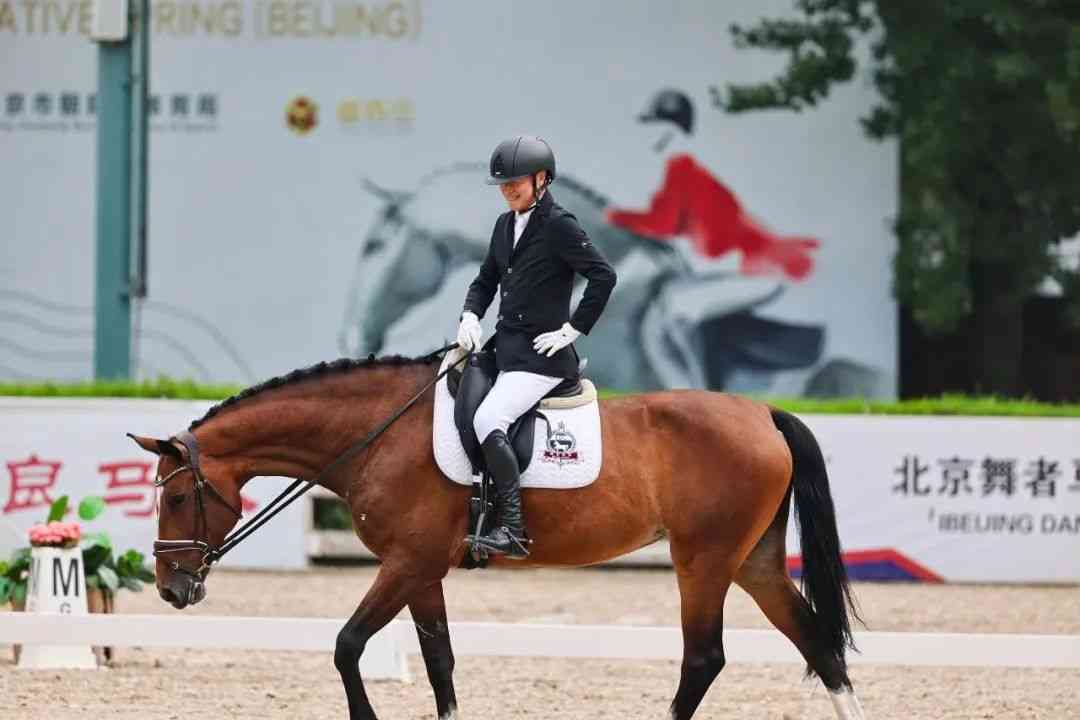
Many riders were simply TOO STRONG and therefore ROUGH with their rein aids. The horses appeared strong and ‘heavy’ mainly because the riders were pulling on their mouths. Horses were often on the forehand and lacking hind leg engagement. I know that riders lost marks due to being over strong and rough with their hands. Riders need to develop a strong core in their position, so they do not need to pull. This takes time to develop but as riders, it is imperative we do it.
许多骑手在使用缰绳时力度太强,因此缰绳扶助很粗鲁。骑手拉拽马嘴会导致马匹让骑手感到手上沉重。通常马匹的重心会落在前肢,缺乏后肢的参与。有些骑手因为过于手拉得力度太大、太粗鲁而丢分。骑手需要在增强核心力量以后,就不需要拉拽了。核心力量的训练需要时间,但作为骑手,核心力量对我们非常重要,我们必须要提升。
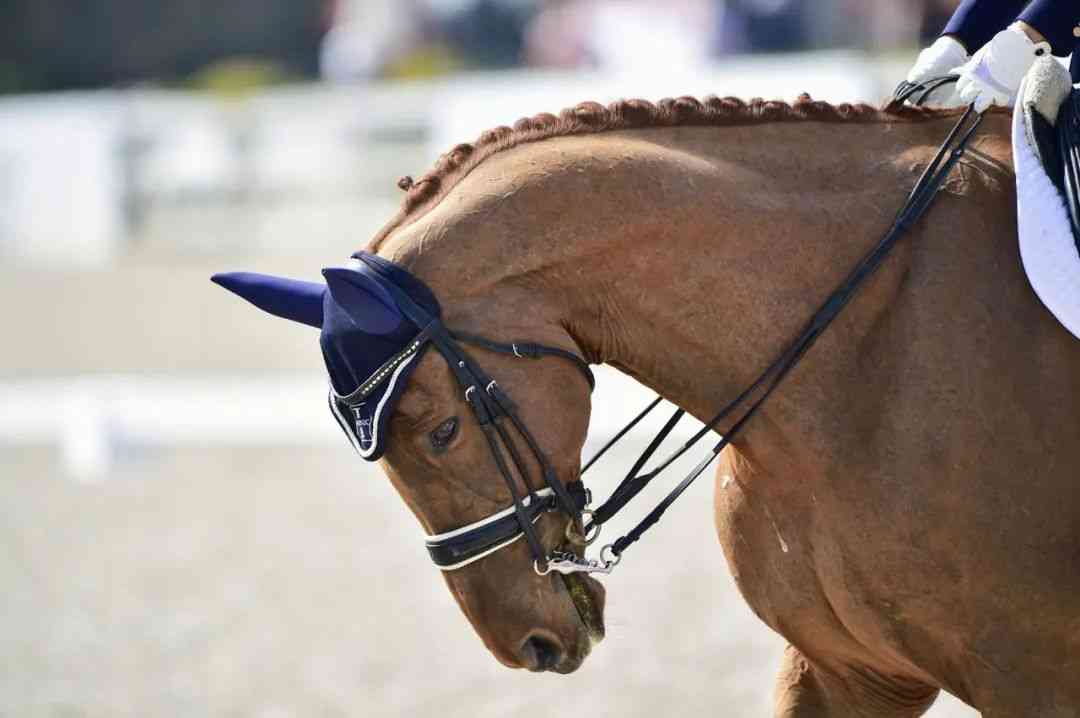
These are all the points I wanted to discuss.
如上是我想讨论的所有要点。
You can of course disregard them!
当然,你也可以忽略!
However, I do hope the above can help some riders and coaches in some way to gain better marks in tests but more importantly, to help riders understand how and why they do things; to improve the rapport between horses and riders; to help coaches to see the details more clearly.
但是,我确实希望上述内容能够在某种程度上帮助一些骑手和教练在比赛中获得更好的成绩,但更重要的是,帮助骑手理解如何做以及为什么要这么做;增进马匹与骑手之间的默契;帮助教练更清晰地看到细节。

作者简介PROFILE
Jeremy Michaels
· 英国马会BHS院士级教官
· 英国马会BHS考试总考官
· 天星调良马术 马术培训总监&马房总监
· 教育学硕士
· 曾任英国马会BHS教育总监
· 曾任哈特伯瑞大学马业总监和高等学历教育资深讲师
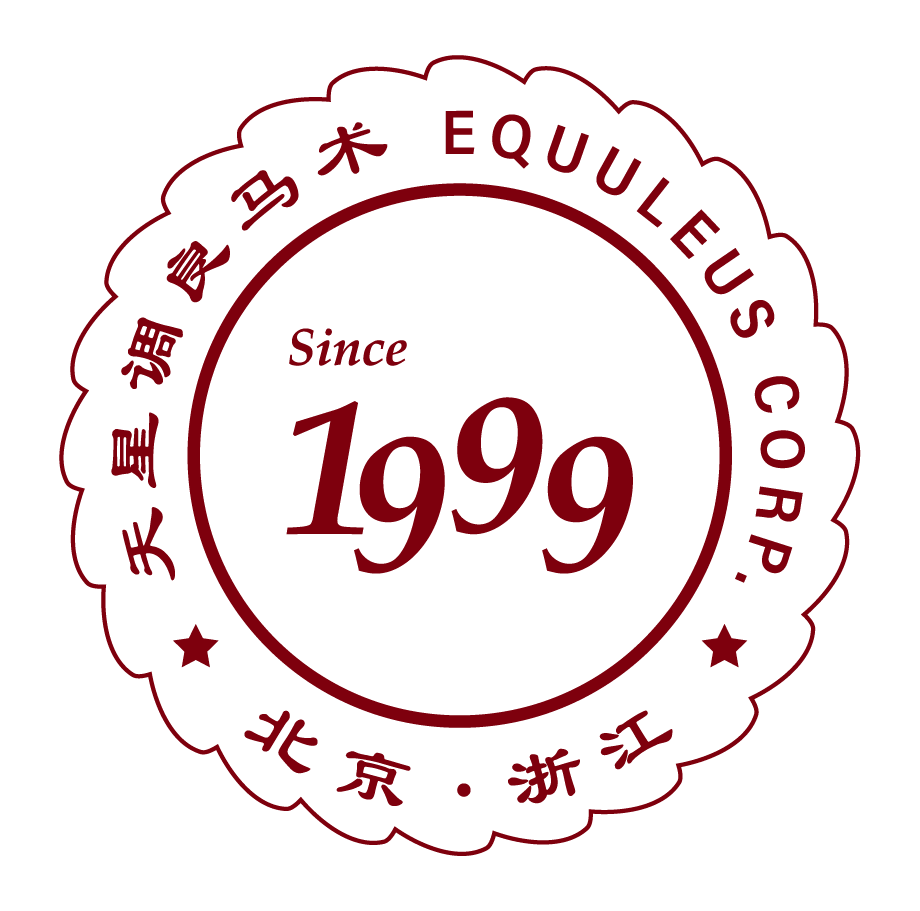

|


